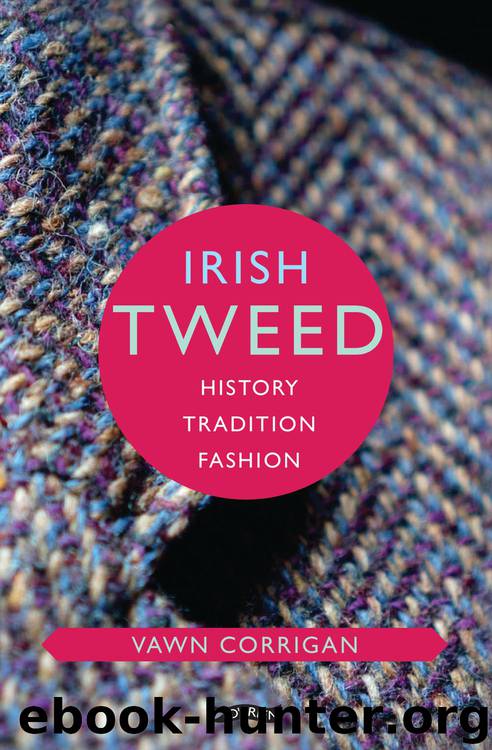Irish Tweed by Vawn Corrigan

Author:Vawn Corrigan
Language: eng
Format: epub
Publisher: The O'Brien Press
Published: 2020-03-13T16:00:00+00:00
The arrival of this ebullient wave of talent was at odds with the general atmosphere in the country. Ireland’s 1930s’ protectionist policy led to decades of tariffs on imported clothing and textiles, making them too costly for most people. A tiny minority could afford imported haute couture or travelled to London and Paris for such style. The Grafton Academy had been established by the pioneering designer Pauline Clotworthy in 1938, and talented designers had emerged from it, but Paris and London swallowed them up. The country lacked the means or the interest to offer them substantial careers.
Irene Gilbert was arguably the very first to bring Irish design onto the catwalk when she showed her designs in the upmarket Dublin city restaurant Jammet’s in 1950. Her successful fashion business provided a model for those who followed. Some of the wealthiest women in the world, including style icons such as the Countess of Rosse and Princess Grace of Monaco, wore Irish tweed creations by Gilbert.
The ‘rag trade’ was buoyant in Ireland as businesses focused on goods for export. The designers could draw on the strong network of small garment factories as well as the highly specialised hand skills that proliferated – knitting, embroidery, millinery, crochet, and lace. Some built businesses around imitating styles from abroad.
Entrepreneur Jack Clarke responded to the severe import tariffs by going into production. At one stage, his clothing manufacturing company, Richard Alan, employed more than three hundred staff and was the country’s biggest clothing exporter. Clarke was important in growing the Irish fashion scene as he was the first to employ designers for his own collection Country Life.
Sybil Connolly, Ireland’s best-known designer from this period, started her career by working for Jack Clarke. Connolly created the romantic styles that captured the imagination of wealthy urban Americans. Carmel White, the editor-in-chief of the American edition of Harper’s Bazaar, chose a lavish candlelit event in the stunning twelfth-century Dunsany Castle, in County Meath, hosted by Lady Dunsany, to showcase Connolly’s work in 1952. Her first collection included an early bohemian take on the traditional red tweed skirts which were still being worn in parts of Connemara.
‘Mullaghattan’, one of Neillí Mulcahy’s designs in purple Donegal Tweed, c.1960.
Download
This site does not store any files on its server. We only index and link to content provided by other sites. Please contact the content providers to delete copyright contents if any and email us, we'll remove relevant links or contents immediately.
POP by Steven Heller(3307)
Japanese Design by Patricia J. Graham(3109)
The Power of Broke by Daymond John(2897)
Architecture 101 by Nicole Bridge(2764)
Indistractable: How to Control Your Attention and Choose Your Life by Nir Eyal(2334)
Fusion 360 for Makers by Lydia Sloan Cline(2308)
Batik by Rudolf Smend(2123)
Actionable Gamification: Beyond Points, Badges, and Leaderboards by Yu-kai Chou(2122)
Origami Art by Michael G. Lafosse & Richard L. Alexander(2065)
Homebody by Joanna Gaines(2031)
Whiskey in a Teacup by Reese Witherspoon(1936)
Worn in New York by Emily Spivack(1926)
Feng Shui by Stephen Skinner(1900)
Austin Kleon by Steal Like an Artist(1887)
Simple Gatherings by Melissa Michaels(1855)
Don't Make Me Think, Revisited: A Common Sense Approach to Web Usability by Steve Krug(1826)
Hygge: The Danish Art of Happiness by Marie Tourell Søderberg(1693)
The Joy of Hygge by Jonny Jackson(1685)
The Laws of Simplicity by John Maeda(1568)
